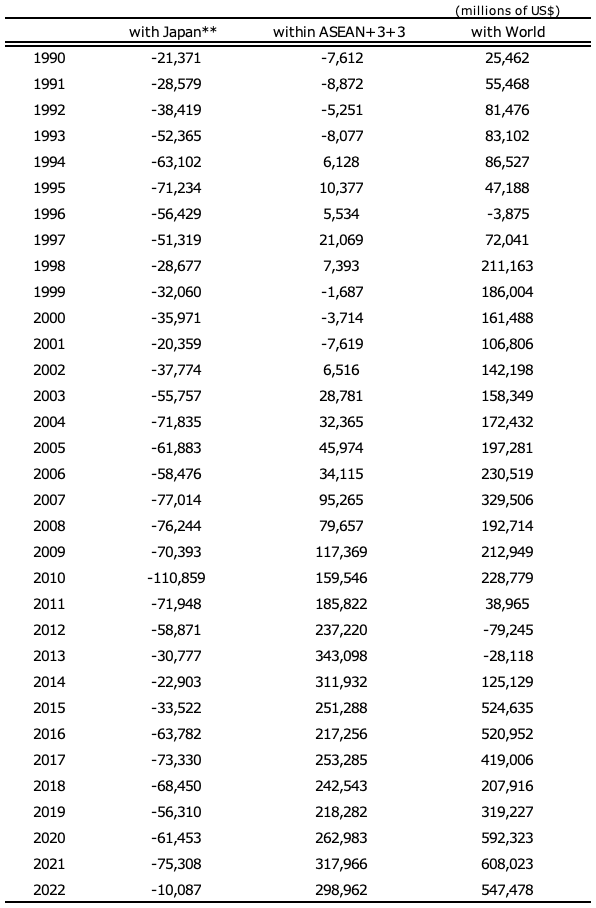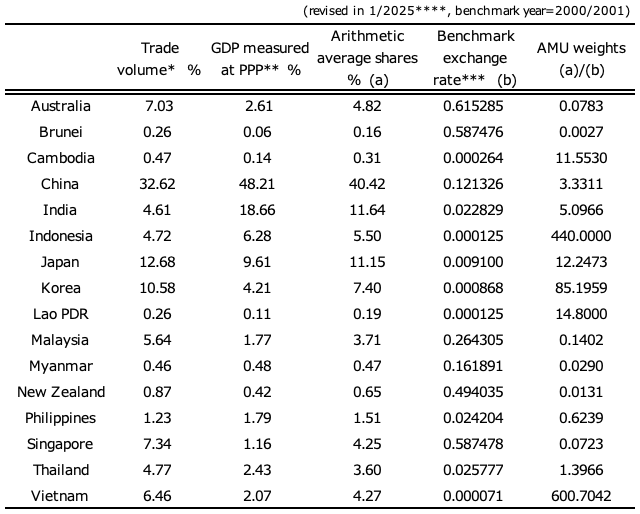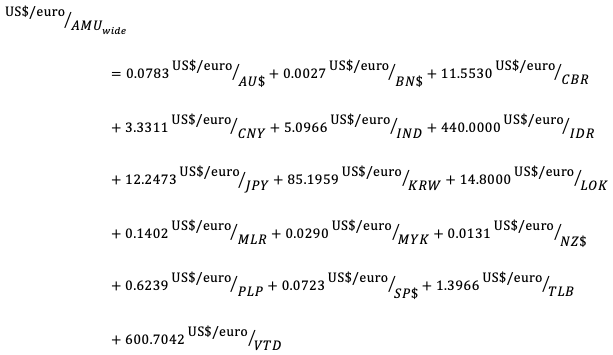The purpose of creating new data for the Asian Monetary Unit from ASEAN10+3 (Japan, China, and South Korea) +3 (Australia, New Zealand, and India)-AMU-wide
The Asian Monetary Unit (AMU), which was created as a joint project of the 21st century Global Centers of Excellence (COE) Program of Hitotsubashi University and RIETI, is a common currency basket composed of 13 East Asian currencies which include those of the Association of Southeast Asian nations (ASEAN) 10 plus Japan, China, and South Korea. These data have been published on RIETI's website since September 2005. The AMU-wide is a common currency basket composed of the 13 AMU currencies plus an additional three countries--Australia, New Zealand, and India--which are strongly connected with the Asian countries. As a common currency basket composed of a wider range of currencies, the AMU-wide is expected to be utilized as a surveillance indicator corresponding to the extensive regional economies.
The calculation methodology of the AMU-wide and AMU-wide Deviation Indicators is the same as that of the AMU. The benchmark period is defined as the following: total trade balance of member countries, total trade balance of member countries (excluding Japan) with Japan, and total trade balance of member countries with the rest of world should be relatively close to zero.
Table 1, which shows the trade balance accounts of the 16 Asian and Oceania countries for the period 1990 to 2022, indicates that the intra-regional trade balance figure was the lowest in 1999 and the second lowest in 2000. Trade balances in the other years during this period were also not large. Accordingly, we have decided upon 1999 and 2000 as the benchmark period of the AMU-wide. The benchmark exchange rates are calculated as the average of the daily exchange rates in 1999 and 2000.

Similar to the method of calculating the basket weights of the AMU, those of the AMU-wide are calculated based on the arithmetic shares of intra-regional trade volumes and GDP measured at purchasing power parity (PPP) (average of the most recent three years, 2020-2022). Table 2 shows the AMU weights as well as trade volume, GDP measured at PPP, arithmetic shares, and the benchmark exchange rates.

We use the AMU-wide weights in Table 2 to calculate an exchange rate for the AMU-wide in terms of the US$-euro as follows

The basket weights of the AMU-wide and AMU-wide Deviation Indicators are revised annually.
For the time being, only nominal AMU-wide Deviation Indicators are published.

